---------------------------------------------------------
Ducks are pretty hardy birds, but Foamy Eye is a fairly common issue with ducks. Generally, if you see foaming in your duck’s eye, it is their body’s natural way of trying to clear an infection either from an injury or from a respiratory issue.
Preventing Foamy Eye
One of the most important things you can do to keep your ducks healthy is to provide plenty of fresh, clean water. Duck water bowls need to be at least several inches deep, enough that they can completely submerge their head to keep their mucous membranes moist & clean.
Water bowls should be cleaned & refilled daily to keep them clear of dirt, algae & poop. Dirty water can lead to an infection in the duck’s respiratory system. Another possible cause of respiratory issues is ammonia buildup in the duck house from overly soiled bedding. Symptoms of respiratory distress in ducks include a foamy or bubbly eye (white frothy foam forming around the eye), sneezing, coughing and/or labored breathing.
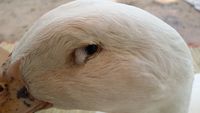
Treatment of respiratory disease
You should begin treatment by separating the infected duck. I always like to try out natural remedies before resorting to antibiotics with my flock. Provide plenty of fresh water; you can mix in a little apple cider vinegar (about 1 tablespoon ACV per gallon of water). Rinse the eyes with saline solution twice a day.
While you have the duck restrained for cleaning the eyes with saline, also put a couple of drops of Vet Rx under each of her wings. Vet Rx is a great natural medicine for treating poultry respiratory issues. It works like a menthol rub on humans- as they tuck their bills under their wings to sleep, they inhale, clearing up congestion. I give the natural treatment of saline and Vet Rx coupled with extra clean water 5-6 days. If symptoms have not cleared (or if at any time they get worse), you may need to consult a veterinarian for a round of antibiotics.
Foamy Eye without respiratory problems
If your duck has a foamy eye but doesn’t have any respiratory symptoms, the cause is likely either from an eye injury or over-mating. When ducks mate, the drake grabs the back of the female’s neck, which is where her sinuses are located. During mating season especially, a favored female can experience eye & sinus issues.
Separate the affected duck (or separate the drakes to give her a break while she is healing). Treating an eye/sinus injury is going to be pretty similar to a respiratory problem. Provide plenty of clean water for drinking and so she can clear her nostrils. Mix in some apple cider vinegar to the drinking water, and rinse her eyes twice a day with saline solution. The eye should clear up in about a week as the injury heals. If it doesn’t an antibiotic eye ointment might be needed.
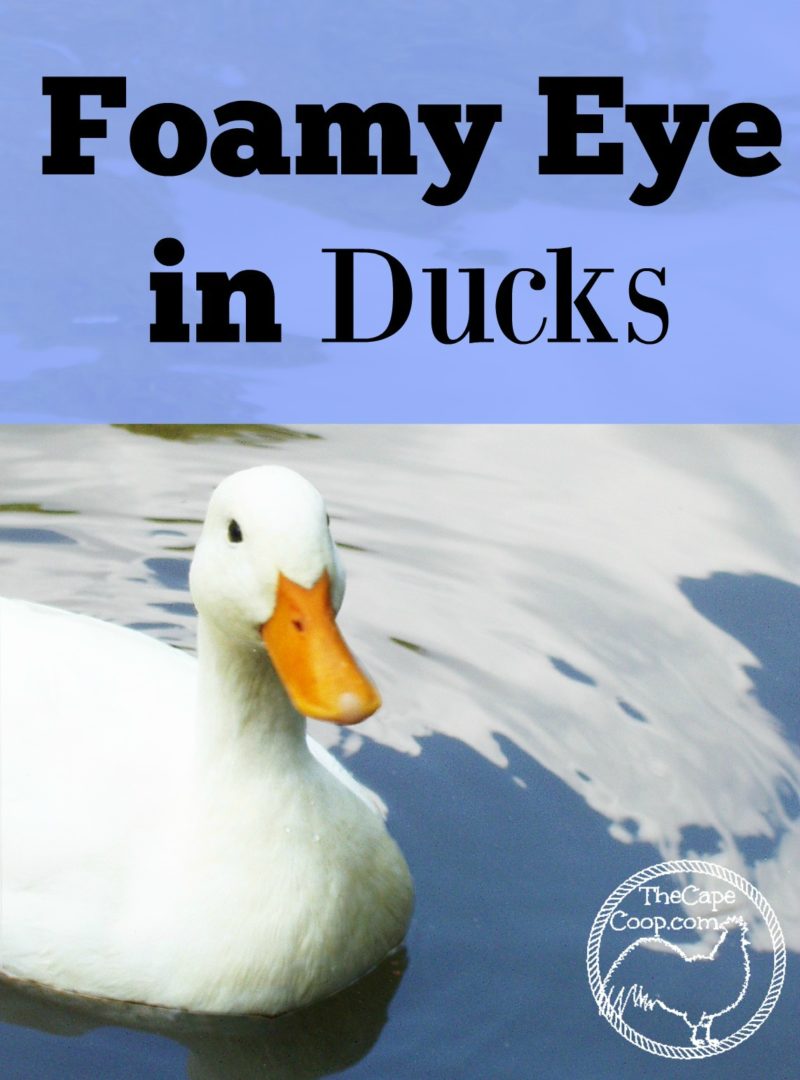

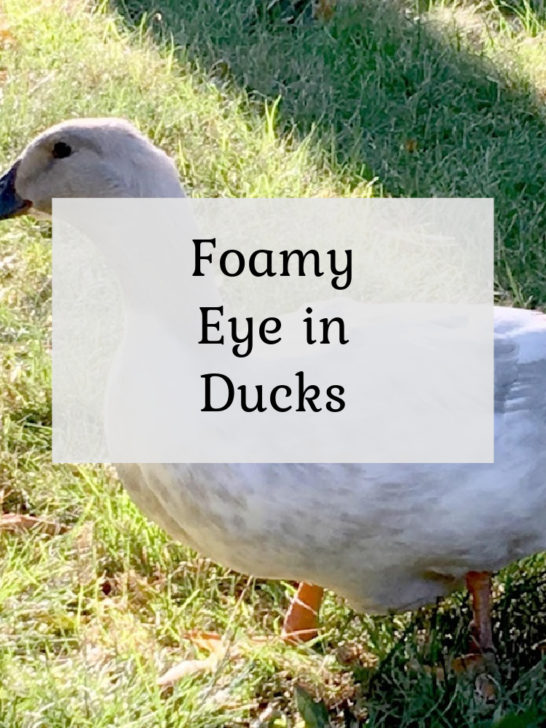

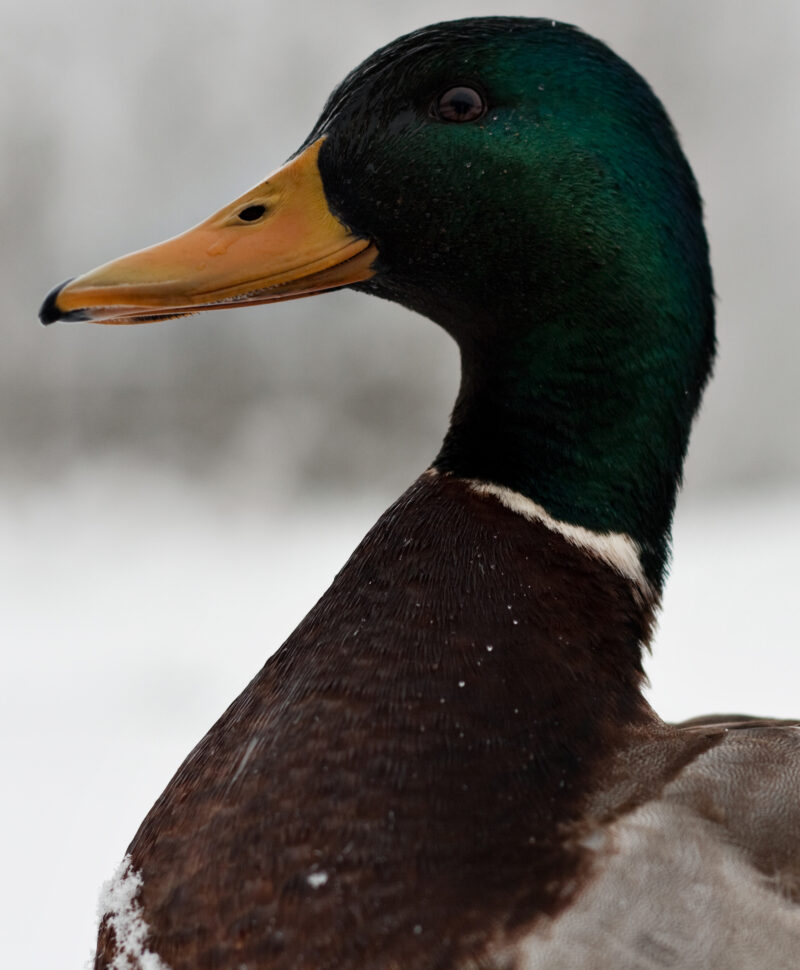

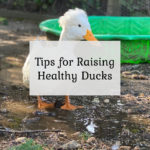

Pati
Sunday 27th of April 2025
Pls. notify me by email of any follow-up comments or new posts. Many thanks! GuardDuck (')>
Kay
Wednesday 26th of February 2025
My American pekin started having foamy eye 2 days ago. I brought her inside and finally let her back out earlier today. I let her bathe and gave her a clean environment the last 2 days. She didn't have any foam in her eye today either. She has no other symptoms especially respiratory related. Was it just stress and lack of cleaning ability? Im just worried I'll go out there in the next couple days and she'll be gone. When I google and ask people in Facebook groups they were she needs antibiotics and stuff. Was I okay letting her back outside? She was more stressed in the house away from her flock and stopped eating. As soon as I let her back out she ran to them and started eating and drinking. Should I just continue to monitor her or am I putting her and my flock at risk? HELP!
Liz
Friday 28th of February 2025
I would have done the same thing. As you mentioned it can be really stressful for them to be indoors away from their flock. Just keep monitoring her, but it sounds like you got her through the worst of it
Ada
Monday 24th of January 2022
I have a question. We’ve have roosters that beat up other roosters, females, chased us around, and one even tried to scare off a dog! (I think he was trying to protect his brother) when you have a bird that’s just plain mean,(or a team of two) is there anything you can do? Also, currently we have ducks, five Peking and three mallard. I know The mallards are females, and I think All Except one of The Peking are male. They jump up on the females, and one will sometimes fight the one male that’s on top so he can get on top of her! The females can’t even lay eggs yet! Do Peking just mature faster? My brother thinks they’re just fighting. We separated them cause I saw one had a foamy eye, and I didn’t want them to hurt the girls since they’re smaller.what can we do? (Also sometimes they do this weird head bobbing thing.I thought they were courting, but later I saw a female bobbing at another female,so what does that mean?)
Liz
Tuesday 25th of January 2022
Most homesteaders will tell you that if a rooster is causing you that much trouble it's time to put him in freezer camp (eat him). That of course depends on your view of your chickens, we don't eat ours, but we have given away a rooster that we just couldn't turn around. I draw the line at a rooster that chases after and attacks humans. We had one bantam rooster that we kept and tried to rehab even though he would go after people though. It takes a lot of patience and honestly once they get in the habit of bullying everyone it can be hard to break. You can separate him in a place where he can see everyone but not get to them to give him a time out for a couple days. To make him respect humans you need to think like a chicken and "embarrass" him a little. When he goes after you, you need to either grab him and carry him around under your arm for a bit, or hold him pinned to the ground for a bit to show your dominance. Of course, remember you are much bigger than him and be gentle but firm. You need to walk away the winner at the end so if you pin him and he wiggles out and attacks you and you run away it will only reinforce the behavior. It is helpful to have a long handled rake with you when you enter the chicken yard. It can help him keep his distance, but also spooks him if you hit the ground near him with the rake and he will often back down. I've found the worst time for roosters is around their first birthday to their second birthday. That is when their hormones are at their worst and you need to give frequent reminders of who is in charge.
With the ducks, it's very common to see mating behaviors before the females are laying. They are either practicing their mating skills or they are working out the pecking order. You might find you have an issue with the Pekins males and Mallard females because the Pekins are so much bigger than Mallards. You'll definitely want to keep an eye on them and separate them if the Mallards start losing feathers or get foamy eye. The head bobbing has two means - and you've worked them both out! Generally up and down head bobs are flirty or sometimes if they are just happy or excited. Side to side head bobbing is more territorial, females will often do that to other females to tell her to stay away from her mate or her nest or space. The side to side bobbing is also common when they are working out which female is the top female.
Deb
Thursday 18th of November 2021
How’s it going on that acre for you Liz? Still at it?
Liz
Wednesday 24th of November 2021
Still going strong! I love my little farm :)
Sadie Y.
Wednesday 11th of August 2021
It is definitely not bumble foot, I have already checked for that. After soaking it for a long time the swelling is down a little bit and she is putting some weight on it. I still can't tell what it is though, so do you have any further ideas?